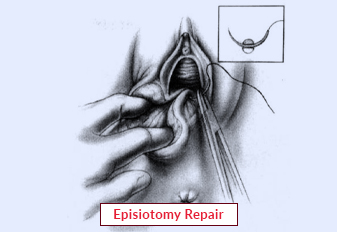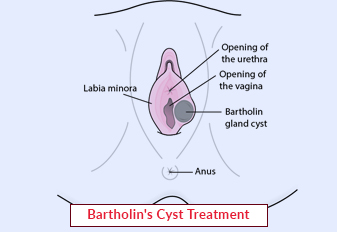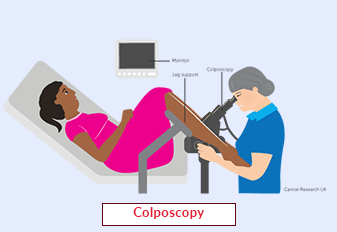Episiotomy Repair

Episiotomy repair is a surgical procedure performed to repair and suture the perineal tissue after an episiotomy, a common surgical cut made during childbirth. Episiotomies are sometimes necessary to facilitate the delivery of the baby or to prevent severe tearing of the perineum. This article aims to provide an understanding of episiotomy repair, its significance in postpartum care, and the procedure involved in restoring the perineal tissue.
Book an AppointmentAbout Episiotomy Repair
An episiotomy is a surgical incision made in the perineum, the area between the vagina and the anus, during childbirth. The purpose of an episiotomy is to enlarge the vaginal opening and prevent uncontrolled perineal tearing, which can occur during a difficult delivery. After the baby is delivered, the episiotomy incision is repaired through a careful suturing procedure to promote healing and restore the integrity of the perineal tissue.
Procedure of Episiotomy Repair
-
Anesthesia: Prior to the repair, local or regional anesthesia, such as an epidural or a pudendal nerve block, is administered to ensure the comfort of the patient during the procedure.
-
Cleansing and Preparation: The perineal area is cleansed with an antiseptic solution to minimize the risk of infection. The area is then draped to maintain a sterile environment.
-
Evaluation of the Episiotomy Site: The healthcare provider examines the episiotomy site to assess the extent of the incision, the presence of any additional tears, and the overall condition of the perineal tissue.
-
Suturing: The repair begins with the placement of sutures. The type and technique of suturing may vary depending on the extent and location of the incision. Generally, absorbable sutures are used to close the layers of tissue, including the vaginal mucosa, perineal muscles, and the skin.
-
Layered Closure: The repair is typically done in layers to ensure proper alignment and healing of the tissues. The deeper layers, including the muscles and fascia, are sutured first, followed by the superficial layers, such as the subcutaneous tissue and the skin.
-
Hemostasis and Wound Care: Throughout the repair process, any bleeding points are carefully controlled to achieve hemostasis. The wound is irrigated with a sterile saline solution, and any excess fluid or debris is gently removed.
-
Post-Repair Assessment: After completing the repair, the healthcare provider ensures proper wound approximation and assesses the integrity of the repair. This may involve checking for any areas of tension, gaps, or excessive tightness in the sutures.
-
Pain Management and Recovery: Following the episiotomy repair, pain management strategies, such as oral pain relievers or topical anesthetics, may be prescribed to alleviate discomfort. Proper post-repair wound care instructions are provided, including hygiene practices, sitz baths, and the use of pain-relieving measures.
Require Assistance?
Get A Quick Callback From Our Healthcare Experts






